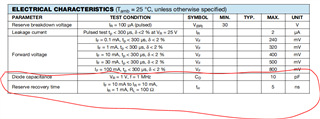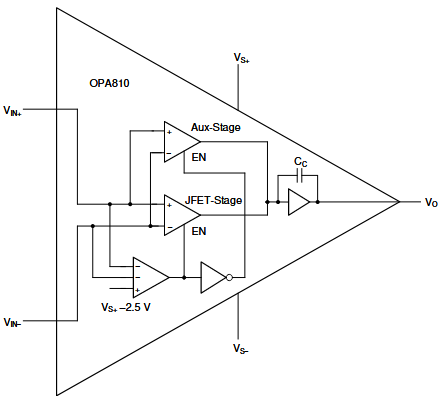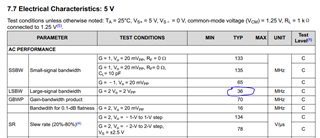Other Parts Discussed in Thread: TMUX7462F, TL072, TL082
Input signal range: 0 to 10V, single ended signal, frequency 2MHz. The following design is recommended in the user manual. OPA810 input uses 33 Ω+220pf as the filter. Can you help us with the following questions?
1. How to increase the design of overvoltage protection?
2. When the op amp is not powered, what is the state of the device input? If the device input is low resistance, how to prevent the normal input 10V signal from damaging the device;
3. If you want to add a clamping diode to point A of the device input in the picture, can you choose the Schottky type? Is the BAT54S of VISHAY OK? The following figure shows some of its parameters.








